Most preppers plan on using wood for heating and cooking, in the event that the power goes out. That makes sense, as mankind has been using wood for cooking and heating ever since our ancestors first harnessed fire to their use.
Wood is a renewable resource and one of the very few fuels that you can harvest from nature on your own. Cutting and hauling wood may be difficult, but it’s nowhere near as difficult as drilling for oil and then distilling that petroleum down to usable products.
But believe it or not, you can’t just burn any wood in a fire. Oh, it might burn just fine; but that doesn’t mean that you’re going to be satisfied with the results. Some woods can be extremely dangerous to burn, as they can be dangerous, giving off toxic fumes.
For that matter, there are many other things that people put in a fire, which can also give off toxic fumes.
Many types of plastics, color printed materials, chemicals, Styrofoam, corrugated cardboard (cardboard boxes), dryer lint (which has been touted as a fire starter) and wood that has been treated with chemicals.
We need to be aware of what we are burning and make sure that we have a good source of wood to burn.
So, what are some of the types of wood that we shouldn’t burn?
Green Wood
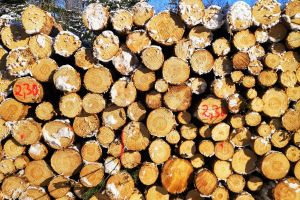 Freshly cut trees are said to be “green wood.”
Freshly cut trees are said to be “green wood.”
The biggest problem with this, assuming that you can get it to ignite, is that it will produce a lot of smoke.
While the smoke may not be considered to be poisonous, breathing in smoke can be harmful to your lungs.
On top of that, the smoke will signal anyone within visual range that you have a fire going, not something that you really want to advertise in a survival situation.
Related: Survival Mistakes I’m Too Ashamed To Admit
In times past, people would cut wood and split it, stacking it for the next year. That would provide the wood plenty of time to “season,” drying out to a safe point for burning. This normally takes six to nine months.
Driftwood
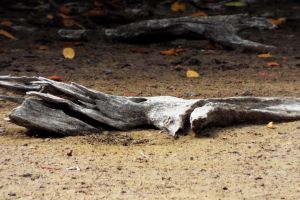 People like to collect driftwood and burn it in a campfire, when camping on the beach.
People like to collect driftwood and burn it in a campfire, when camping on the beach.
They don’t recognize the danger they are putting themselves in by burning what seems to be a great and readily available fuel for their fires. Any driftwood is likely to contain high concentrations of salt and other minerals that it absorbed while afloat.
Even if the wood has dried, it will still contain that salt, which will burn as the wood does, giving off toxic fumes.
Engineered Wood Products
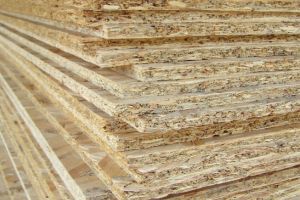 The term engineered wood products refers to any of a number of products that we can usually buy at the lumberyard, such as plywood, particle board, chipboard, MDF, or OSB.
The term engineered wood products refers to any of a number of products that we can usually buy at the lumberyard, such as plywood, particle board, chipboard, MDF, or OSB.
These products are made by using a combination of wood and a resinous adhesive.
But many of those adhesives contain formaldehyde.
When the wood burns, and it burns rapidly, toxic chemicals are released.
Pallet Wood
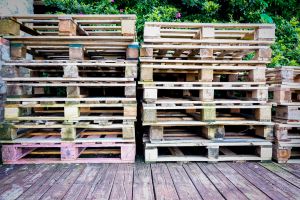 Wood pallets may seem like an ideal, cheap, source of wood for the fire, especially if the pallets have been made of oak.
Wood pallets may seem like an ideal, cheap, source of wood for the fire, especially if the pallets have been made of oak.
However, the wood used in most pallets has been chemically treated to keep wood fungus and wood-eating insects from attacking it.
This can produce toxic chemicals when burning, depending on what chemicals they used to treat the wood.
Pressure-treated Wood
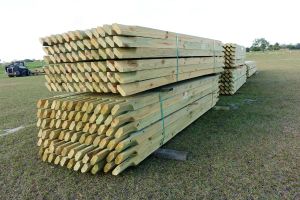 Like pallet wood, pressure-treated wood has been chemically treated to prevent decay.
Like pallet wood, pressure-treated wood has been chemically treated to prevent decay.
If anything, it is worse than the pallet wood, as there is generally a higher concentration of chemicals.
Those chemicals are often injected right into the wood.
Related: How to Get a Year Supply of Firewood for $10!
When burning the wood, arsenic is released in such concentrations that the EPA considers it hazardous waste.
Wood That Has Been Painted or Stained
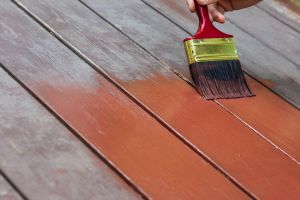 While we’re talking about man-made products, avoid using any wood that has been painted, stained, varnished or lacquered, regardless of the wood species.
While we’re talking about man-made products, avoid using any wood that has been painted, stained, varnished or lacquered, regardless of the wood species.
Movies show people burning furniture in survival scenarios; but the directors and producers of those movies don’t know how dangerous that is.
While that wood furniture is perfectly safe to use, many of the finishes produce toxic gases when they burn.
Pine and Other Softwoods
Pine may seem like a useful wood to burn, especially in areas where there is an abundance of pine growing. But pine is one of the worst woods to use in a fire. This means that the construction wood used in framing houses is bad for burning as well, as it is mostly some sort of pine.
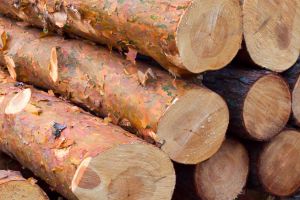 There are two problems with pine. The first is that it doesn’t hold much potential heat energy. When you burn pine, it burns rapidly, giving the appearance of giving off a lot of heat. But compared to other woods, you’re actually getting very little heat. The coals of the fire produce the most heat, not the flames. Pine doesn’t produce much in the way of coals, hence the lack of heat.
There are two problems with pine. The first is that it doesn’t hold much potential heat energy. When you burn pine, it burns rapidly, giving the appearance of giving off a lot of heat. But compared to other woods, you’re actually getting very little heat. The coals of the fire produce the most heat, not the flames. Pine doesn’t produce much in the way of coals, hence the lack of heat.
⇒ The Ingenious DIY Project to Heat Your Home When the Power Goes Out
The other problem with pine and other similar softwoods is that they are resinous woods. While the rosin itself is not dangerous, it tends to pop, when burning.
This causes large sparks to fly out of the fire, where they can cause the fire to spread. You don’t want a pine rosin spark falling on your floor or your tent, spreading the fire.
Any Wood with “Poison” in the Name
There are a number of different types of wood which contain the word “poison” in the name of the plant, tree or wood. Things like poison oak, poisonwood, poison sumac, and even poison ivy will give off toxic fumes when burning. At he least it will be an eye irritant; but it could also cause serous respiratory problems.
Oleander
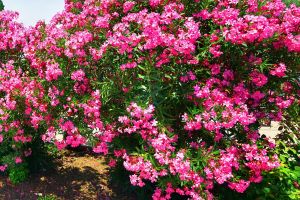 Oleander can grow as either a shrub or small tree.
Oleander can grow as either a shrub or small tree.
Either way, the wood from the oleander produces a toxic chemical when burning, which is serious enough that it can put you in the hospital.
Related: 10 Killer Trees You Should Never Have In Your Backyard
Learn to recognize this plant, so that you will avoid it.
It grows in a wide variety of climates, mostly as an ornamental landscaping plant.
The Yew Tree
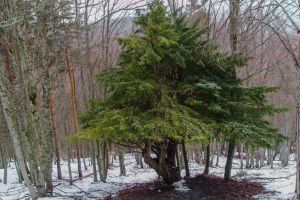 The Yew is another attractive tree, commonly used for landscaping.
The Yew is another attractive tree, commonly used for landscaping.
Yet it is one of the most poisonous trees in the world, with all parts of the tree being poisonous to humans.
The specific poison is called “taxine,” which is capable of causing cardiac arrest.
You shouldn’t even touch this wood, without wearing gloves as protection for your hands.
Mexican or Brazilian Pepper
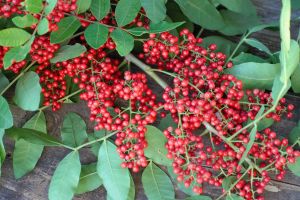 We’re not talking about chili peppers here, but a tree that contains the word “pepper” in its name.
We’re not talking about chili peppers here, but a tree that contains the word “pepper” in its name.
This tree is known by both the name Mexican Pepper and Brazilian Pepper.
It contains a toxin named urushiol, which can cause rashes and other allergic reactions.
Related: 5 Poisonous Plants That Can Be Used As Medicine When SHTF
Like the yew, gloves should be worn if you ever have to handle it. But don’t let that be to put it in the fire.
Any Rotten or Moldy Wood
Rotten and moldy wood might seem like an ideal thing to burn, as it lights easily and burns quickly. Even so, all rotted wood has fungi in it, which might be spread by the fire.
The rotting process will tend to increase the amount of moisture in the wood, increasing the smoke produced, giving you that much more of a chance of inhaling the smoke, along with any toxic substances produced by the fire.
Be Prepared
The people who are most likely to burn any of the woods mentioned above, are those who don’t have a good stock of firewood, stored up for the emergency. Your best protection is to build a good stockpile of seasoned hardwood firewood, before a disaster strikes.
Just how much wood do you need? If you have to heat your home through an entire winter, using a wood-burning stove, you’ll go through four to six full cords (not face cords) of firewood. That’s a lot of wood.
Keep in mind too, that if we’re talking a TEOTWAWKI event, you’ll need that much wood each and every winter; so you need a plan for cutting and hauling the wood that you’ll need to have for the next winter.
That’s going to be a challenge, without gasoline for your truck.
You may also like:
 Why You Should Put a Silver Coin in Water
Why You Should Put a Silver Coin in Water
Similar to Morphine: The Best Natural Painkiller That Grows in Your Backyard (Video)
7 Chicken Mistakes You Should Never Make
The Lost Superfoods: Book Review
Better Than Walmart: Stores To Get Survival Foods For a Bargain

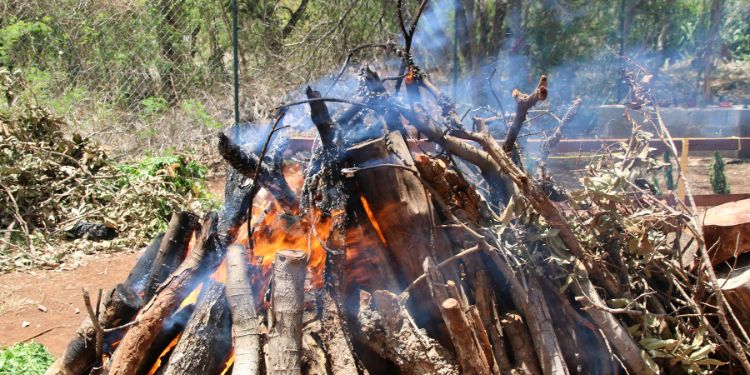













Pine is fine to burn
Absolutely True. Pine must be seasoned properly, and chimney cleaned to keep the creosote controlled. A slow-burning, smoldering fire will increase the creosote buildup no matter what wood you burn, so must be monitored closer.
I heat my house in Wyoming with pine every winter all winter long. I cut standing dead so it is not green.
Only if you are not burning it in a stove! It will create pin rosin in the chimney i know because when i was 8yr old our house burned to the ground and burned my brand new shoes i had just ofr school and let me tell you shoes were hard to come by in 1952
good dry jackpine is the best firewood. We heated our house every winter to -20 degrees. Another is dry poplar-aspen but does have more ashes than jackpine.
It will be interesting to watch the great debate between the two governors of Florida and California.
Who is better? We have a successful Florida governor that has people moving there, some from Cali.
The other California governor has high prices in everything, gas, electricity, burger flipper union like wages of $20 plus an hour. To top it all off illegals flooding the homeless sh*t sidewalks an streets. Major California cities are total dumpster fires. Demoncrats have ruined San Fransicko the once tourist stop on the West coast.
California EV’s are joke the electrical grid is in poor shape to handle the green new deal, including electric stoves.
A commonsense world both gas and electric technologies can exist. One technology like electricity only won’t work as seen in Texas one Winter season.
Hybrid vehicles are much more efficient than only being an EV.
Gas stoves are better for cooking food any day. Those politicians in their homes have gas stoves while telling us we can not have gas stoves?
While I agree with you. I have to ask. WHAT THE HELL DOES YOUR COMMENT HAVE TO DO WITH THE ABOVE ARTICLE??? Sorry to holler, but it’s like WTF. Where did that come from?
I’ll not condemn your rite to voice an opinion, in fact I appreciate people using that rite.
In my opinion, I believe in “the right place and the right time”, but that’s just me.
Oh Wendell, leave them alone, you got your freedom of speech said. Who cares what you say either, this is the right time to comment.
Prepping is contingent on current events in America and elsewhere.
It’s good to mix in some wider views in the comments.
What do other prepper posters think about the comments section?
I agree. People that have to bring politics into every damn conversation tic me off also. Get a life folks. It really doesn’t matter which side is winning as they are both different cheeks of the same ass. Just the fact that you believe one side or the other really gives a damn about you makes me question why I should listen to anything they say. If anything that either side does help you it was an accident not because they were trying
Walnut is not good either !
William, You are so wrong. I have been in the firewood business for the past 15 years. I sell several species of wood. When I have walnut I keep it for myself. When seasoned it burns hot, clean, and completely. Very few ashes. If burned green it smolders and smokes a lot and smells very bad. very poor choice if not seasoned. My earth stove needs ashes removed about every 6 to 7 weeks if I can stick to seasoned walnut. Ash wood acts similar to walnut but dose not last quite as long. Yellow locus burns the hottest and lasts the longest but leaves a lot of ashes as does hickory. Most other hard woods are in between. Apple, hickory, and cherry smell the best. This has been my experience.
Agreed. I do a lot of wood working with walnut, and I save all the shavings and scraps for kindling.
Walnut does have it’s toxic down-side – one, being bad for horse pasture and bedding, but seasoned walnut is good for building and burning…
Burning wood is one thing burning votes is another thing.
This posted article is good for people not living in high density locations like cities or suburban locations.
Just as everyone bugging out to the woods to hunt for a small squirrel or small deer, there will be hundreds of starving hunters going after the one poor hungry creature among them.
Same in a city or suburban locality, trees will be in short supply for a cold Winter to keep warm. Not everyone has a fireplace, many have gas related furnaces instead.
Time to drill for oil. Dump the Bidenomics, hey liberals like California, quit voting straight Demoncrat party line.
US States By Electoral Votes – WorldAtlasCalifornia and Texas have the most electoral college votes, with 55 and 38 votes respectively. Florida and New York are tied for 3rd place, with 29 electoral college votes each. There are 7 states, along with DC, that have 3 electoral votes, which is the minimum.
This is why Demoncrats have a powerful jump in many elections like the ones for presidential elections. This is why liberal Demoncrats are moving to those States, to turn them baby blue then keep them red.
It is your country, what will you do?
No wonder those brain dead California liberals are the land of fruits and nuts in more ways than us common folk in the fly over states.
They go to other states to spread the words of their glorious leader, governor Newsom who will replace Biden in 2024.
Have Americans seen what happened to California?
The state burns their firewood in preventable wildfires each year.
Burning wood might be another law against the freezing homeowners as it causes environmental air pollution.
Unions and environmentalism run California into the ground, the liberals are fleeing to your states today.
What does your political comments have to do with this blog on what wood is best or worse for burning????
Thunderone2,
Everything here is politically related in some form. Prepping is not done in a dark dank vacuum of audacious opinionated feelings.
Be the better and let it go.
@Thunderdome2:
I agree. In most cases the political stuff is totally off topic. IF it ties into the post topic, then it is almost ok. I do NOT read these posts for other political views.
(Unless it is a political post, and then I don’t want your views on politicians; dem, rep, all are the same: power hungry people who want to control everything you do.)
I don’t think drilling for oil will help anybody if SHTF. When I lived in Houston I had a fireplace installed. I kept a cord of wood covered in the back yard. When the power went out in the “winter” we were warm. I hope this out of the box thinking helps.
So you want me to listen to the opinion of someone that isn’t bright enough to stick to the subject we were talking on?
You left off Bass Wood. It gives the scent of a Skunk peed in your stove that is difficult to get rid of.. You can burn Pine, but, only if it is very dry. Other than that Pine will clog the chimney.
John
I have burned wood for heat for the last 30 years. ALL wood will clog your chimney if you don’t clean it. I burn pine to get fires going and for quick heat then switch to oak or almond and clean my stove pipe once a year
I s’pose, sticking your nose over anything that is burning is not healthy.
But are we talking about open campfires, fireplace, closed stoves, outdoor water heating stoves, ?
Your info is good, people just need to apply common sense….. if any of that is still around.
I only say, “Good Sense” now because common sense isn’t common anymore.
I agree with your point about the difference between burning in an open campfire and a closed stove and an occasional peice versus the main type being burned.
Texas and California, with 55 and 38 votes respectively, lead the states in electoral college votes. New York and Florida, with 29 electoral college votes apiece, are tied for third place. Together with Washington, DC, there are seven states that have the requisite three electoral votes.
What does your rambling diatribe have to do with this subject on burning of wood????
Please be the better and let it go, prepping and politics go hand in hand up the hill to grandma’s house we go:)
Wood is the best for warmth and comfort in the Winter nights.
Foreign countries for decades have bought up major wooded areas to ship our precious wooded forests overseas.
Who is making these deals without our permissions?
People forget even those piles of wood for your wood fired stoves to burn in Winter. America has gotten sloppy in renewing our logged forests. We must continue a reforestation of our countries backwoods to have future supply of wood.
California and other States can reduce wildfires, they need to employ hundreds of unemployed workers to clean up the dead wood debris and fallen diseased trees. That wood can be sold to the public.
The unions always get in the way by union contracts to stop enterprising small business from cutting into the union wages.
The environmentalist do not want people to be in their restrictive protective wild habitat endangered species lands.
When will we average Americans say enough?
I like burning wood in campfires and at home in warm comfort.
We burn just about any wood we can get with no problems.
Ash is one wood that you can cut, split and burn on the same day.
Yew should not be handled with out gloves? The same tree that has been used for making longbows since the 4th century BC?
Pine itself may not burn as hot but charcoal made from pine will burn hotter than that made from hardwoods. Pine charcoal was a choice fuel for the blacksmiths forge up until about 300 years ago when coal/coke became the choice fuel for that reason.
Pallets are made from scraps of furniture grade wood in many cases. Who ever makes the pallets gets the woods from furniture companies that are local. Which means that you can find pallets not only made of oak but exotic woods as well like teak, mahogany, etc. Pallets made in foreign countries use the woods that are native to that area.
If you build your house with hempcrete, (hemp hurts, hydrated lime, and water), you won’t need to heat/cool it much at all.
Sorry. Although many of these warnings are legitimate many are not. Just another example of keyboard warriors having no practical understanding or experience. Just a bunch of word. Hope you got paid well.
How would you know if we are not being bombarded by AI, instead of trolls?
Sycamore tree wood and the wood from the Willow tree create smoke that is also bad for your health. Holly and Hemlock are also poisonous–including the leaves.
Do NOT burn any of these.
Great Article
yes , true , never burn carcinagines unless you like pollution
that being said , I would burn anything in in crisis mode
no such thing as save the planet when in kaos
at the rate the idiots are destroying and calling it Green , or Sustainable
never trust anyone who tell s you not to , unless you 1st vet out the solutions
lived in mountains most of my life , and burned green wood all the time so as to extend the heat burn cycle overnight
rule , Dry to start , then Wet for long lasting
If you do burn woods with pollutents in them , then expect the consequence
yes , many get sick from inhailing fumes of wrong items such as garbage, trash, laced wood with chemicals in them .
at your own risk
Learned my lesson with pine, never stuff the stove full. When I heard a jet engine sound and went outside to see what it was, saw 12 foot flames roaring blue out of my cherry red glowing triple walled stove pipe. Was quite the sight to see, as I freaked out and ran inside to calm the fire in the stove. lol. Good thing it was during a blizzard and none of the neighbors were up. I splashed some water in on half the fire, and boy did the whole area fill with smoke. Got it under control in minutes, but man I was worried about burning down the house after that. I only do a half stove full with soft wood now. Takes 3 to 4 times as much compared to hardwood, but hey it’s free and my chimney sock gets run down every month to knock off the creosote build up.
I did the same thing. When I told my invalid father that the roof was on fire all you could see was asses and elbows leaving the house 🙂 I also put it out the same way.
Used baking soda on the chimney fire
Keep a spray bottle near the wood stove to reduce flames in a fire
The author is more knowledgeable about many wood species than myself and I thank him for these insights. He points out several areas that I thought were common knowledge but bringing it up might save someone from making the mistakes of burning paint or glued up products like OSB, or heaven forbid, any chemically treated wood. He does however over simplify the issue of burning pine. The following is a summary of part of an article from the Missouri University, school of natural resources.
One pound of oven-dry wood of any species has an available heat value of about 8,600 Btu. Then the variables come in to play, the wetter the wood the more BTUs are used up just boiling off the water before useful heat from combustion is available. Next is the fact that hardwoods are more dense, so you get more pounds of wood when you buy a cord of oak as opposed to pine.
It is prudent to monitor the chimney and clean it often enough.
I personally burn about 30% pine and the rest is elm. This works for me but your mileage may vary.
If you have a fire in your chimney, throw a cup of water on it and close up the stove. Almost always does the trick quick.
Good article. I would stay away from pine and other soft woods, and green wood. Those woods just do not burn hot enough, and cause your chimney to run waaaay too cold.
Most people don’t even know that a chimney has an operating temperature, and that’s around 300 degrees. Once the temp drops to around 250, you start to get serious creosote buildup really fast.
When you burn wood, it is never a complete combustion, so you always have some smoke going up the chimney and in that smoke you have creosote, and if your chimney is too cold, that creosote will condensate on your chimney wall and build up. If your chimney is running at around 300 degrees, it never condenses on the walls.
When you start a fire, open that damper up wide open and get that fire roaring as fast as possible, and get a magnetic thermometer and stick it on your stove pipe and get it up to 450 degrees or so for 30 to 45 minutes, and after that, drop it down to around 300 degrees or so, and this heat will create a real draft and suck up that heat and warm up your chimney fast. The faster you get that chimney heated up, the less creosote you’ll have building up.
The other thing is, NEVER install one of those “MAGIC HEAT” things that “RECOVER” lost heat going up your chimney. They work, but they work too good, and cause your chimney to run way too cold, and drastically increase your creosote build up and a chimney fire.
Back in Wisconsin on the farm, we heated with wood for decades and never once had an issue. We had two brick chimney’s in that old farm house, and that thing heated like a corn crib. We went through 12 to 15 cords of wood every winter, and I never took out more than maybe a coffee can full of creosote at the bottom of the chimney’s, and they were each about 45 foot tall.
I cleaned our chimneys in the spring and again in the fall to make sure they were clean and clear. I did all our neighbors too, and it was easy to see who was running cold chimney’s or green wood. Most were older, and at night they’d close the damper and let the fire smolder all night and that caused the build up. A cold running chimney, and seriously incomplete burning of the wood that created a lot of smoke, and that smoked was loaded with creosote and it all would condensate on the wall of their chimney. I finally just gave up trying to get them to change their ways and I just cleaned their chimney a few times in the winter, which was miserable, and a little scary at times on those snow and ice covered roofs.
Lastly, check your stove pipe once a week or so by tapping on it with something steel like a knife or something, and it should make pinging sound, but if it makes a thud sound, clean that thing ASAP, because she needs.
Anyway, really good article. Keep up the great work.
Great article and great comments, this one’s a keeper.
Aside, from wood as a heating source, I wonder if raw coal is available for heating?
i grew up in Indiana and the house had a coal furnace. The coal man came every month, dumped a ton down the coal chute into the coal bin in the basement.
All us kids were taught at an early age to put coal chunks in the furnace. I remember also how much fun it was to throw small chunks against the wall and watch them explode. Of course, it was the best way to get a spanking, but we still couldn’t resist.
Yes you can still buy coal to heat your house with. It is not easy to find but it is out there. As far as heating coal you would want to use anthracite. Some Tractor Supply companies carry it, other can order it for you. If you are not to far from Ohio there is a supplier in Champaign county that also sells coal stoves, or was, i aint been up that way in about 5 or 6 years now.
I am a blacksmith and i use bituminous coal in my forge, that is a bit harder to find but i have a supplier in Tip city that drops a couple tons off every so often.
When push comes to shove as in a shtf situation You will use what you can get to make fires out of. I was raised in the country. I have burned most of the common woods like pine, walnuts, cedar and oak. I have also burn driftwood. The thing is if your fool enough to set in the smoke and breath it in then I guess your survival rate just went down to very low.
Any smoke is harmful to you it does not matter what type of wood is used. Your best bet is to have a good wood burning system that does not put smoke in the area you are heating. Unless it is down to 32 degrees the only wood I will burn is for cooking. You can keep warm without a fire down to a certain temperature. But I live in the south so temps here are not bad.
Burn wood that is available where you are. Of course, seasoned wood (dry wood) burns best and gives off the most heat.
Don’t burn dried grass or especially ANY kind of ivy even if dry, grass may contain pesticides, herbicides and ivy can put airborne irritants into the air that will linger and worse drift to gardens and people areas.
How about ficus? We have a lot of ficus benjamina AKA Weeping fig.
I don’t understand the point of this article. Yes, these materials are hazardous in gaseous form but if that’s all that I have in a scenario of life or death survival from hypothermia, then I think I’m going to risk whatever effects these chemicals may have. The average survival guy should know proper ventilation guidelines to mitigate those effects anyway. Now, if we are talking about the prepping aspect of this information, isn’t the whole concept of prepping the planning and preparation in the first place of avoiding these horrible materials to heat your home?
Mulberry is another good wood for burning after it has been well seasoned. The only problem is it does pop and throw off embers so make sure you have your fireplace screen closed when burning this hot burning wood, it has a high BTU value.
Cottonwood is one of the worst ever woods to burn, as it has next to no heat value, burns quickly (when dry). Ask me how I know. Went through a winter in Idaho once many moons ago, in a house built in 1901. Would stock the wood stove in the evening, get it glowing, and in the morning I could see my breath, 40 degrees or minus. On the other hand, tamarack, or larch, is one of the best woods to burn, as it nearly splits itself, has a very high heat content, and burns with no smoke (when seasoned).